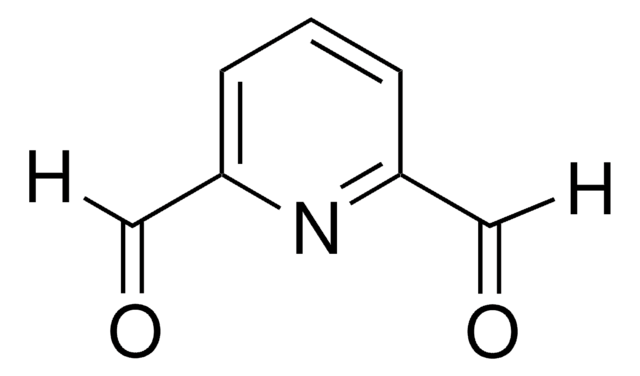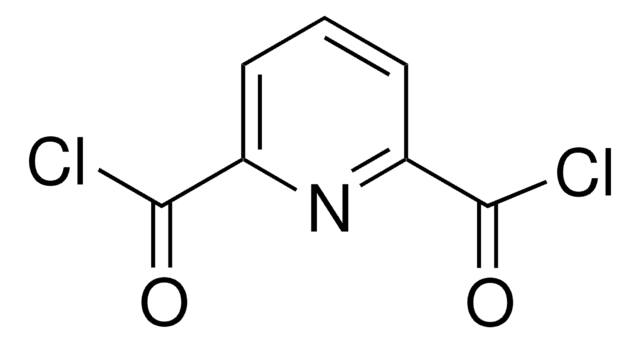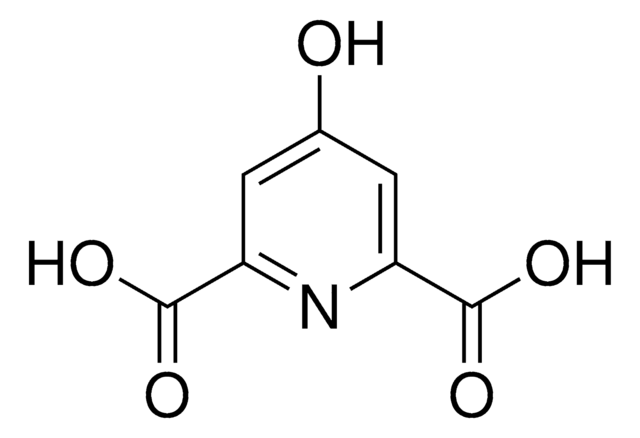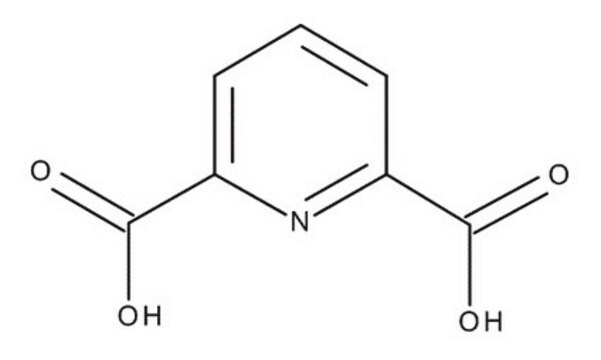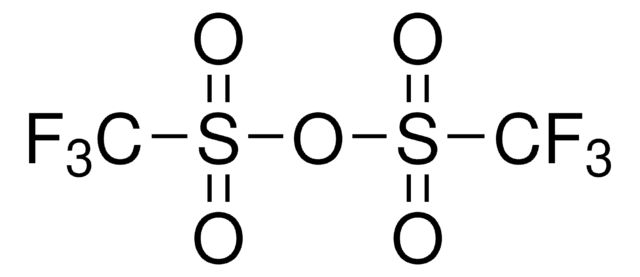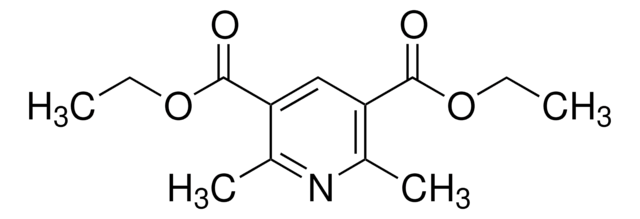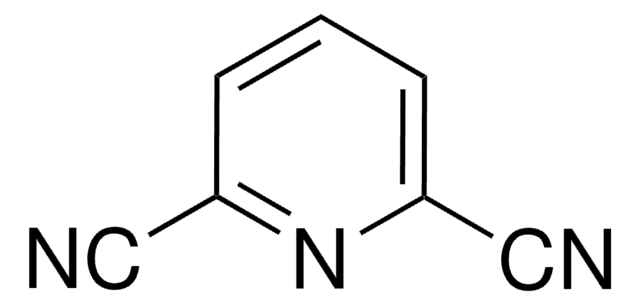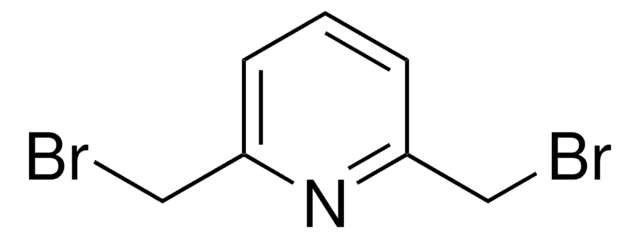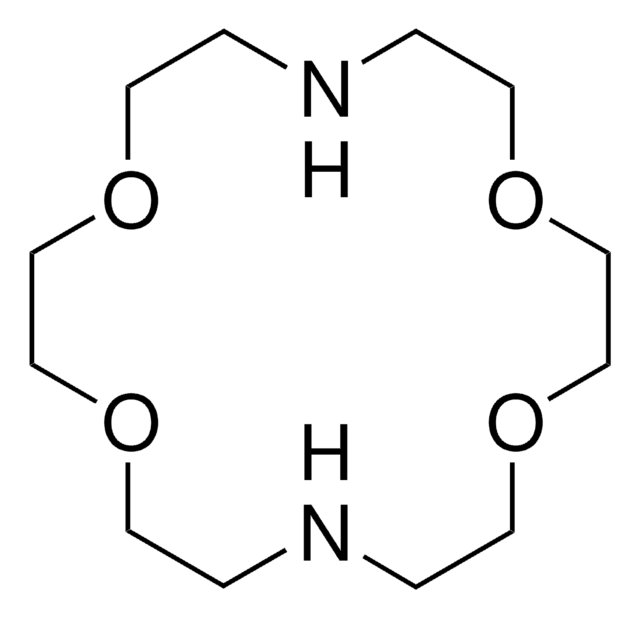All Photos(3)
About This Item
Empirical Formula (Hill Notation):
C9H9NO4
CAS Number:
Molecular Weight:
195.17
EC Number:
MDL number:
UNSPSC Code:
12352100
PubChem Substance ID:
NACRES:
NA.22
Recommended Products
Assay
99%
mp
121-125 °C (lit.)
SMILES string
COC(=O)c1cccc(n1)C(=O)OC
InChI
1S/C9H9NO4/c1-13-8(11)6-4-3-5-7(10-6)9(12)14-2/h3-5H,1-2H3
InChI key
SNQQJEJPJMXYTR-UHFFFAOYSA-N
General description
The standard molar enthalpy of formation for dimethyl 2,6-pyridinedicarboxylate (dimethylpyridine-2,6-dicarboxylate) has been calculated from the standard molar enthalpy of combustion, which was measured by a static bomb calorimeter.
Application
Dimethyl 2,6-pyridinedicarboxylate may be used in the synthesis of:
- ditopic macrocycle having two xylyl rings linked by diethylene glycol and 2,6-pyridinediamide spacers, which acts as host molecule capable of forming complexes with diphenylurea derivatives
- N,N′-bis(2-aminoethyl)dipicoloinic acid diamide Schiff base
- 1,1′-(2,6-bispyridyl)bis-3-(9-ethylcarbazole-3-yl)-1,3-propanedione
Signal Word
Danger
Hazard Statements
Precautionary Statements
Hazard Classifications
Eye Dam. 1 - Skin Irrit. 2 - STOT SE 3
Storage Class Code
11 - Combustible Solids
WGK
WGK 3
Flash Point(F)
Not applicable
Flash Point(C)
Not applicable
Personal Protective Equipment
dust mask type N95 (US), Eyeshields, Gloves
Choose from one of the most recent versions:
Already Own This Product?
Find documentation for the products that you have recently purchased in the Document Library.
Customers Also Viewed
Thermochemical and theoretical studies of dimethylpyridine-2, 6-dicarboxylate and pyridine-2, 3-, pyridine-2, 5-, and pyridine-2, 6-dicarboxylic acids.
Matos MAR, et al.
Journal of Chemical and Engineering Data, 50(4), 1184-1191 (2004)
Preparation and Luminescent Properties of a Novel Carbazole Functionalized Bis-?-diketone Ligand and Corresponding Eu (III) and Tb (III) Complexes.
Zhang W, et al.
Bull. Korean Chem. Soc., 30(10), 2213-2216 (2009)
Using acetate anions to induce translational isomerization in a neutral urea-based molecular switch.
Yi-Lin Huang et al.
Angewandte Chemie (International ed. in English), 46(35), 6629-6633 (2007-08-01)
Potentiometric determination of the stabilities of cobalt (II) complexes of polyamine Schiff bases and their dioxygen adducts.
Motekaitis RJ and Martell AE.
Inorganic Chemistry, 27(15), 2718-2724 (1988)
Our team of scientists has experience in all areas of research including Life Science, Material Science, Chemical Synthesis, Chromatography, Analytical and many others.
Contact Technical Service

